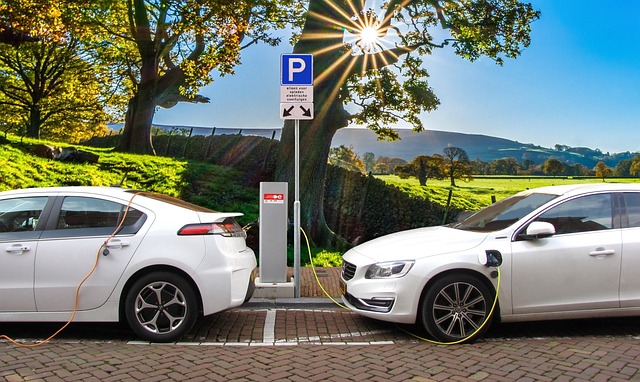Learn how to register your car in California with our comprehensive guide. This step-by-step process ensures you meet all state requirements, from gathering essential documents to completing the DMV application. We’ll walk you through crucial steps like performing a DVL (DMV) VIN verification, which is key to ensuring your vehicle’s authenticity. By following these instructions, you’ll be on your way to seamless car registration in no time.
- Understand California Car Registration Requirements
- Gather Necessary Documents for DMV Visit
- Perform VIN Verification: Step-by-Step Guide
- Complete Application and Pay Fees at DMV
- Register Your Vehicle Online or by Mail (Optional)
Understand California Car Registration Requirements

Before registering your car in California, it’s crucial to understand the state’s specific requirements. The California Department of Motor Vehicles (DMV) mandates several essential steps, including a thorough vehicle inspection and accurate record-keeping. One critical aspect is the dmv vin verification, which ensures that the Vehicle Identification Number (VIN) is legitimate and matches the vehicle’s characteristics. This process is typically facilitated by a mobile vin verifier or mobile vin inspection service, allowing for convenience and efficiency.
The DMV expects owners to provide up-to-date information about their vehicles, including detailed specifications and documentation. A valid registration requires accurate data, ensuring road safety and facilitating efficient vehicle management. By adhering to these requirements, California residents can ensure a smooth car registration process and maintain compliance with state regulations.
Gather Necessary Documents for DMV Visit

Before visiting your local California DMV, make sure to gather all the essential documents required for car registration. This includes your vehicle’s Registration Application (form DV304), which can be obtained from the DMV website or picked up in person. Additionally, you’ll need proof of insurance and a valid driver’s license. The Vehicle Identification Number (VIN) is another critical piece of information; this unique code can be found on the vehicle’s title or in its manual. For convenience, many individuals opt for a mobile vin verification service to complete this step quickly and efficiently.
Another important document is proof of ownership, typically the vehicle’s title or a bill of sale. If you’ve recently purchased the car, ensure that you have all the necessary transfer documents from the previous owner. As part of the registration process, the DMV will perform a vin inspection to verify the vehicle’s information, so having these documents ready streamlines the entire procedure.
Perform VIN Verification: Step-by-Step Guide

Performing a Vehicle Identification Number (VIN) verification is an essential step when registering your car in California. This process ensures that the vehicle’s history and specifications match the information provided by the manufacturer. The Department of Motor Vehicles (DMV) offers both online and in-person methods for VIN verification, but for convenience, many opt for a mobile vin inspection or mobile vin verification service.
Here’s a step-by-step guide to help you navigate the dmv vin verification process:
1. Obtain Your Vehicle’s VIN: The VIN can typically be found on a plate attached to the driver’s side door frame, dashboard, or engine compartment. Make note of it for reference during the verification process.
2. Prepare Necessary Documents: Gather all required documents such as proof of ownership (title), registration, and insurance cards. These will be needed when submitting your application at the DMV.
3. Visit the DMV Website or App: Start by checking if the DMV offers an online VIN verification service. If available, enter your VIN to retrieve initial vehicle information.
4. Conduct a Visual Inspection: Despite its name, a mobile vin inspection isn’t always required. However, if you have any doubts about matching parts or identifying modifications, consider using one of these services for added accuracy.
5. Submit Your Application: Once your information matches the DMV records and you’ve confirmed the vehicle’s condition through visual inspection (or a mobile vin verification), submit your application along with all required documents at your local California DMV office.
Complete Application and Pay Fees at DMV

To register your car in California, the first step is to complete the Application for Title and Registration (form DV367). This form requires detailed information about your vehicle, including its make, model, year, and unique Vehicle Identification Number (VIN). Ensure all details are accurate and match the specifications of your car. Once you’ve filled out the application, submit it along with the required documents and fees to a California Department of Motor Vehicles (DMV) field office or mail it in.
Among the necessary documents is proof of valid insurance and a completed mobile VIN inspection or verification using a trusted service like a mobile VIN verifier. This step involves a quick and convenient check to ensure the VIN on your vehicle matches the information in the DMV’s system, enhancing the accuracy of the registration process. After processing your application, the DMV will issue you a California title and register your car, allowing you to legally operate it on state roads.
Register Your Vehicle Online or by Mail (Optional)

In California, registering your vehicle can be done online or by mail, offering flexibility for busy individuals. The process is straightforward, starting with a DMV (Department of Motor Vehicles) vin verification to ensure the vehicle’s identity and history are accurate. You’ll need to provide detailed information about your car, including its make, model, and year, along with important documentation.
For those who prefer a more convenient approach, mobile vin inspection services are available. These services send a professional to your location for a quick and reliable vin verification, making the registration process even easier. This option is ideal for folks who may have limited mobility or simply want to save time. With just a few steps, you can complete your car’s registration without stepping foot into a DMV office.
Registering a car in California involves understanding specific requirements, gathering essential documents, and completing a VIN verification process. By following these steps—from preparing necessary paperwork to performing accurate DMV vin verification—you can ensure a smooth registration experience. Remember, timely registration not only complies with legal obligations but also allows you to legally operate your vehicle on California roads.
